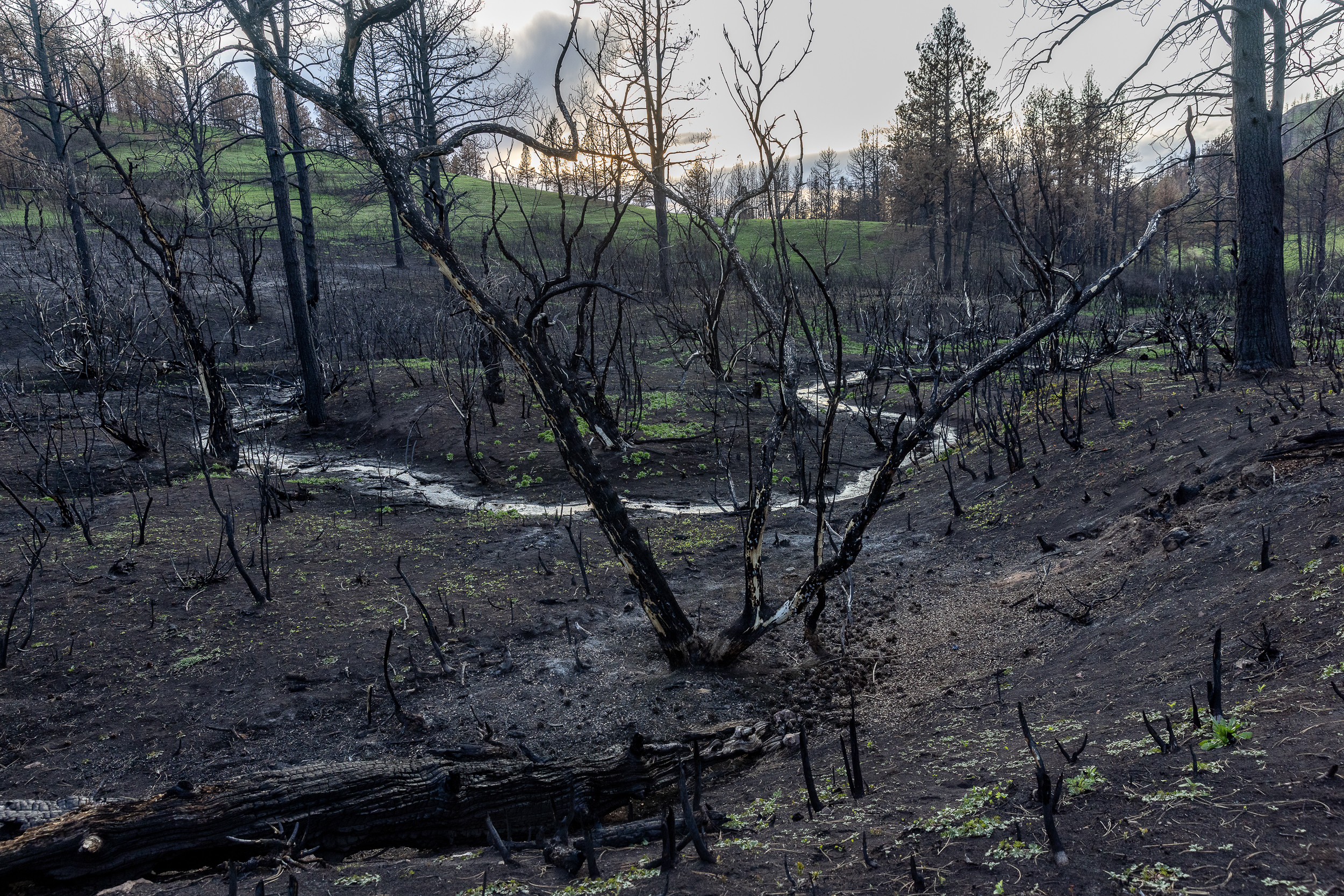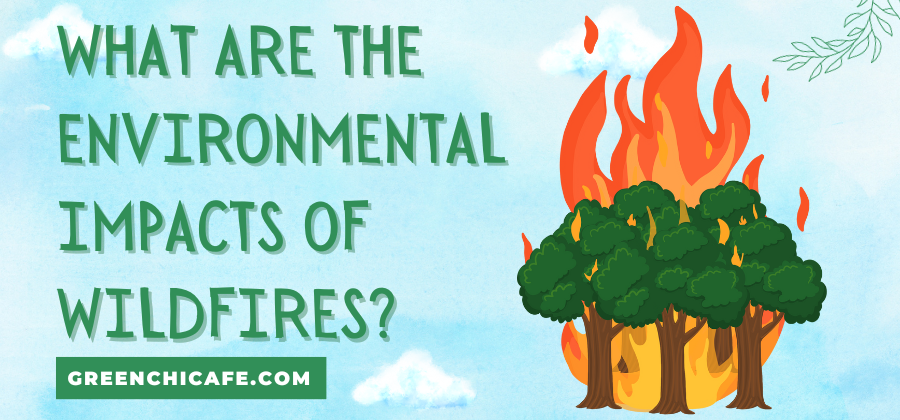Last Updated on June 3, 2024 by Annie Baldwin
Wildfires can wreak havoc on the environment—but they’re also a natural part of many ecosystems.
This article digs into the complex relationship between wildfires, the environment, and human health.
Stick around to understand the nuanced role wildfires play in nature.
What Are the Environmental Impacts of Wildfires?

Wildfires have major impacts on the environment, including air pollution from smoke, habitat destruction as vegetation burns, and soil erosion and water contamination from post-fire flooding.
The fires also release substantial greenhouse gases that contribute to climate change.
Key Points
- Wildfires cause air pollution, erode soil, and contaminate water sources.
- They destroy habitats and release greenhouse gases that contribute to climate change.
- Managing wildfires is crucial to minimizing their environmental impacts.
Our Opinion
This article clearly outlines the wide-ranging environmental impacts of wildfires.
The damage from air pollution, habitat loss, soil erosion, and flooding can be severe both in the short and long term.
While wildfires are a natural occurrence, their effects often go beyond what ecosystems can handle due to climate change and human activity.
We must continue to research methods to better prevent, manage, and restore landscapes after wildfires to protect nature and communities.
How Wildfires Impact Soil and Increase Erosion

Wildfires burn away vegetation like grasses, shrubs, and trees. This leaves the soil exposed and vulnerable to erosion, especially during heavy rains. The hot temperatures also damage soil structure. Fires essentially bake the soil, causing it to become water-repellent. This reduces infiltration and increases runoff and erosion.
The loss of vegetation and litter from wildfires also removes nutrients and organic matter from the soil. This degrades soil health and fertility over time. However, some nutrients like nitrogen and phosphorus may increase post-fire from ash deposits.
Erosion and debris flow after wildfires deliver large amounts of sediment into rivers, lakes, and reservoirs. This turbidity can harm aquatic life and water quality. Downstream flooding is also a concern.
Proper emergency stabilization and rehabilitation are crucial for mitigating wildfire impacts on soil. This includes mulching, seeding, planting vegetation, installing erosion barriers, and addressing water repellency. Monitoring high-risk areas and being proactive are key for reducing erosion and protecting habitats.
The Effects of Wildfires on Water Quality

Wildfires can significantly impact downstream water quality and aquatic ecosystems. As vegetation burns, chemicals, debris, and sediment wash into watersheds during intense rains.
One major concern is increased nutrient loads entering waterways, especially nitrogen and phosphorus. This can trigger algal blooms and eutrophication, reducing dissolved oxygen levels and harming fish and other aquatic life.
Ash and debris from burned areas also increase turbidity and suspended solids. This blocks sunlight and affects photosynthesis and water temperature. Tannins and dyes from burned vegetation can discolor water.
Toxic substances like heavy metals, pesticides, and other hazardous materials can be mobilized and transported downstream after wildfires as well. For example, mercury deposits in sediments can become methylated and more bioavailable.
Post-fire impacts on water quality vary widely based on burn severity, landscape, rainfall patterns, and more. Impacts are usually most acute immediately after the fire, but some effects can persist for years. Proper assessment, planning, and mitigation are important for minimizing wildfire impacts on watersheds.
Wildfire Impacts on Plants and Wildlife
Wildfires can have devastating impacts on plants and animals. Intense heat kills vegetation, destroying food sources and habitat. Slow-moving species often cannot escape, perishing in the flames. Even those that survive may succumb later from injuries or lack of shelter and nourishment.
Fire alters landscapes over the short and long term. Entire forest ecosystems may require decades or centuries to recover. Some species benefit from fires opening up habitat or releasing seeds, but others decline. Invasive plants can also gain a foothold and outcompete natives for resources.
The effects on wildlife depend on mobility, reproductive rates, and adaptability. Small mammals and herpetofauna are vulnerable due to their limited mobility and underground burrows. Birds can fly away but may lose nesting sites. Large mammals generally flee but can still suffer casualties. Aquatic species may be relatively protected from flames but affected later by erosion and runoff.
Post-fire landscapes often lack vegetative cover and food availability. Mass erosion of scorched slopes degrades streams through siltation and eutrophication. The remaining habitat patches may be too small to support wildlife. Competition increases in these suboptimal conditions.
With hotter, drier conditions, wildfires are increasing in frequency and severity. This can overwhelm ecosystems and prevent natural regeneration. Careful management of fire regimes and post-fire restoration is crucial for mitigating impacts on flora and fauna.
The Consequences for Communities Affected by Wildfires
Wildfires can have devastating consequences for communities in their path. Beyond the immediate danger from the flames, smoke and ash create serious health hazards. Water and air pollution also increase due to contaminants in runoff and particulate matter.
Many structures and properties are damaged or destroyed, displacing residents. Loss of infrastructure like power lines and water systems compounds the disruption. Roads and railways may be impacted, hampering transport and emergency access.
The local economy suffers from the loss of buildings, inventory, and equipment. Tourism declines with park closures and evacuation orders. High costs are incurred for firefighting, recovery efforts, and rebuilding. Insurance premiums also tend to rise following major fire events.
Psychological trauma from evacuations, property loss, and health effects take a toll. Vulnerable populations like children, the elderly, and those with respiratory conditions are especially impacted. Loss of life, pets, and heirlooms further compound emotional damage.
Communities affected by severe wildfires face a long road to recovery. Support services are needed to address medical, housing, financial, and mental health needs. Investing in fire resilience through planning, fuel reduction, and public education can help mitigate risks. Partnerships across government, businesses, and community groups build capacity to withstand and bounce back from future wildfires.
FAQ
What Are 5 Effects of Wildfires?
Wildfires can cause air pollution, habitat destruction, soil erosion, water contamination, and loss of wildlife.
What Environmental Harm Is Caused by Fire?
Fires can release harmful pollutants like carbon monoxide and nitrogen oxides into the air. They can also damage ecosystems by burning vegetation and compromising the soil’s ability to absorb water, leading to flooding.
What Are the Impacts and Effects of Wildfires?
Impacts include air pollution, habitat damage, soil erosion, flooding, and effects on tree regeneration and wildlife populations. Wildfires transform landscapes and release greenhouse gases that contribute to climate change.
How Do Wildfires Affect the Environment and Animals?
Wildfires destroy vegetation that animals depend on for food and shelter. They also release pollutants that can be harmful to wildlife. Post-fire erosion can degrade water quality, harming fish and other aquatic life.
Conclusion
Wildfires have significant environmental impacts, including air pollution, habitat damage, soil erosion, and flooding. They release greenhouse gases that contribute to climate change. By burning vegetation and compromising the soil’s water absorption, wildfires transform landscapes and ecosystems. Understanding the environmental impacts of wildfires can help inform better fire prevention and post-fire restoration efforts. Overall, while wildfires are a natural process, their environmental effects underscore the need to manage them carefully.
